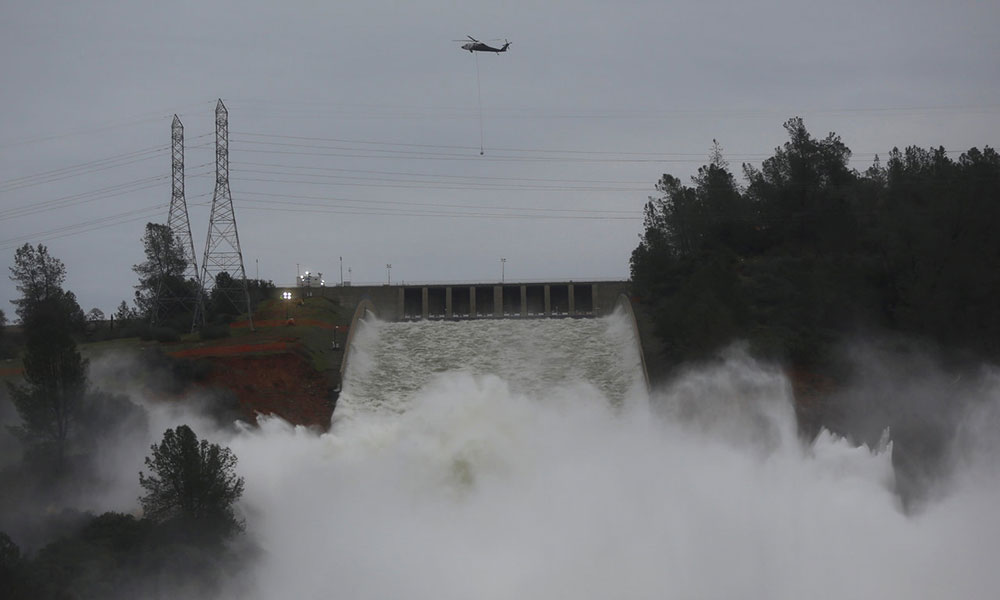
Following Oroville Dam Crisis, Group Steps Up Advocacy Efforts
In the wake of the near-failure of California’s Oroville Dam and ensuing evacuation, the Association of State Dam Safety Officials is stepping up efforts to help members acquire the resources necessary to ensure dam safety.
Despite the rain storms headed toward Northern California, the crisis at the Oroville Dam—caused by erosion on its emergency spillway putting the U.S.’s largest dam at risk of failing—is waning as the reservoir water levels stabilize and the 200,000 people evacuated return home.
But the crisis has opened a national discussion around infrastructure and maintenance of the country’s 84,000 dams—15,498 of which are considered high hazard and could cost at least one life if they fail, according to the National Inventory of Dams.
Reports from the Association of State Dam Safety Officials estimates it could cost $60.7 billion to rehabilitate all inadequate dams, while $18.71 billion would be needed to address only high-hazard dams. In the aftermath of the Oroville Dam situation, ASDSO will strengthen its advocacy efforts to support dam safety.
“There are what are considered high-hazard dams in every state, and several thousand of those are determined to be deficient. So our message obviously is infrastructure, infrastructure,” ASDSO Executive Director Lori Spragens said. “We’ve got to improve our infrastructure and pay [the Federal Emergency Management Agency] out, put the money toward the repairs.”
The advocacy efforts—which will involve ASDSO members, Capitol Hill visits and fly-ins, and contacting Congressional members—will be focused on securing funding for dam safety and repair. As in past efforts, ASDSO is working with the American Society of Civil Engineers on this push.
In December, President Obama signed legislation to create the National Dam Rehabilitation Program as part of the Water Infrastructure Improvements for the Nation Act—a law ASDSO has been requesting for years. The challenge now is getting the new Congress to appropriate the bill, which would provide $445 million over 10 years to publically owned dams. Note, however, that 64 percent of U.S. dams are privately owned.
ASDSO will also continue working to ensure all dams have emergency action plans in place. While it has worked with state members and FEMA on this before, still about 20 percent of dams lack these plans, Spragens said.
“The thing about those plans is they can’t remain static,” she said. “Yes, they can create one, but then it’s always got to be updated with new phone numbers, new contacts, if there’s a new sheriff, new first responders, new information about weather.” Once the plan is updated, agencies then need to familiarize staff with the changes.
Additional work includes providing toolkits on dam safety to state ASDSO members, who can then provide the information to the private and public dam owners they regulate. The association has also been in contact with California’s Division of Safety of Dams at the Department of Water Resources to understand how it’s handling the Oroville Dam crisis.
In preparing to up advocacy efforts, ASDSO’s first step will be a communication debrief, discussing lessons learned and an after-action report with state representatives and members, Spragens said.
“You’re never prepared for everything, but we’re going to learn a lot from this,” she said. “We’re going to sit down next week and go through our lessons learned, and really go back and create a better rapid response plan and always do better the next time.”
Helicopters carry rocks to the Lake Oroville Dam after an evacuation order was lifted for communities downstream in Oroville, California, on Wednesday. (Jim Urquhart/Reuters)






Comments